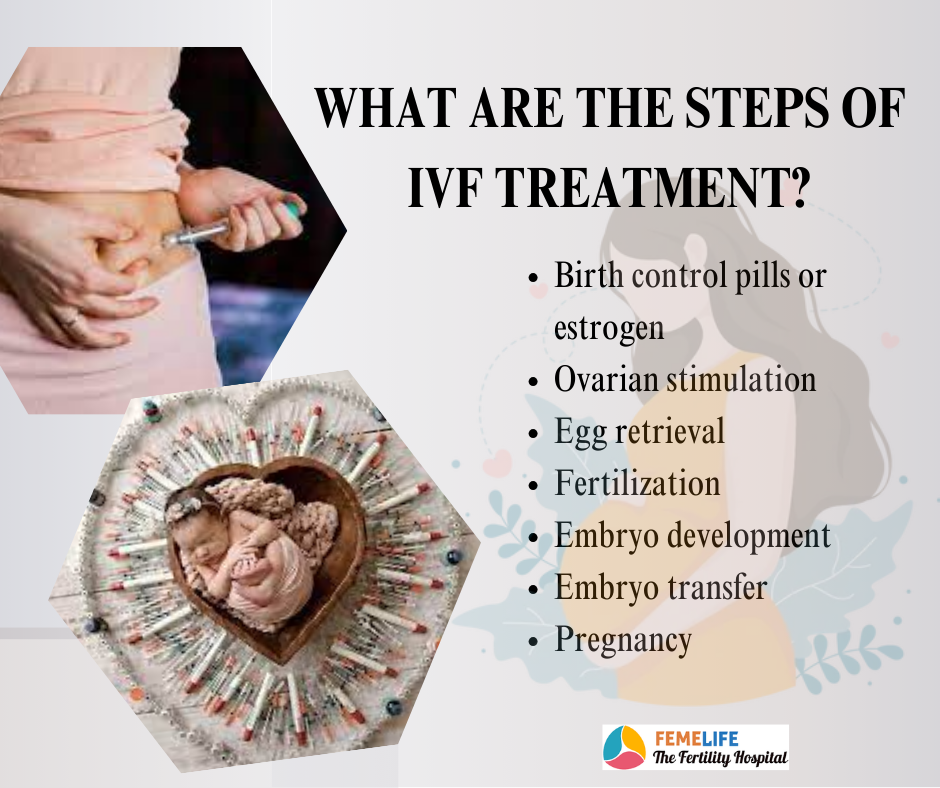What are the steps of IVF treatment?
IVF can be broken down into the following steps:
Birth control pills or estrogen
Your doctor may give birth control tablets or estrogen before you begin IVF treatment. This is used to prevent the formation of ovarian cysts and to regulate the time of your menstrual cycle.
It enables your doctor to manage your therapy and maximize the number of mature eggs obtained during the egg retrieval operation.
Ovarian stimulation
Each month, a set of eggs begins to grow during the natural cycle of a healthy person of reproductive age. Typically, only one egg matures to the point of ovulation.
During your IVF round, you’ll be given injectable hormone drugs to encourage the entire batch of eggs in that cycle to mature at the same time and fully. This means that instead of having one egg (as in a natural cycle), you could have numerous eggs.
Egg retrieval
An ultrasound is used by your healthcare practitioner to guide a small needle into each of your ovaries through your vagina. The needle is attached to a suction device, which is used to extract your eggs from each follicle.
Fertilization
The embryologist will attempt to fertilize all mature eggs using intracytoplasmic sperm injection, or ICSI, the afternoon following your egg retrieval surgery. This means that each developed egg will be injected with sperm.
ICSI cannot be conducted on immature eggs. The immature eggs will be placed in a dish that also contains sperm and nutrition. Immature eggs rarely complete their development in the dish.
Embryo development
Your embryos’ development will be closely watched over the next five to six days.
Your embryo must overcome substantial obstacles before it can be transferred to your uterus. 50% of fertilized embryos reach the blastocyst stage on average. This is the best stage for transfer to your uterus.
Embryo transfer
Fresh embryo transfer and frozen embryo transfer are the two types of embryo transfers.
A fresh embryo transfer involves inserting your embryo into your uterus between three and seven days after the egg retrieval operation. This embryo has not been frozen and is hence “fresh.”
Frozen embryos (from a previous IVF cycle or donor eggs) are thawed and put into your uterus during a frozen embryo transfer. This is a more prevalent practicec for logistical reasons and because it results in a more likely live birth.
